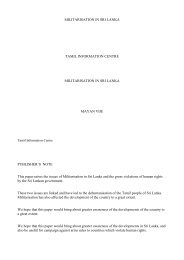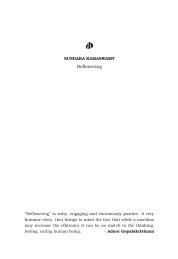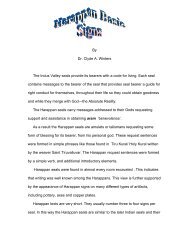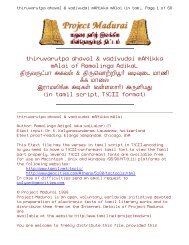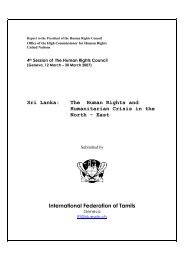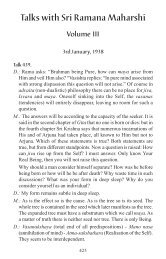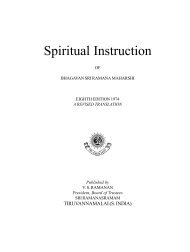Conflict in Sri Lanka: Ground Realities - Tamil Nation & Beyond
Conflict in Sri Lanka: Ground Realities - Tamil Nation & Beyond
Conflict in Sri Lanka: Ground Realities - Tamil Nation & Beyond
- No tags were found...
You also want an ePaper? Increase the reach of your titles
YUMPU automatically turns print PDFs into web optimized ePapers that Google loves.
show how the historical forces, particularly <strong>in</strong> the post-colonialphase have <strong>in</strong> their wake brought about the current politicomilitarysituation whence partition has become an <strong>in</strong>escapableand necessary historical fact. More po<strong>in</strong>tedly we shall exam<strong>in</strong>ethe situation that is currently obta<strong>in</strong><strong>in</strong>g <strong>in</strong> the island as we cometo the close of the first half of this decade follow<strong>in</strong>g the Presidentialelection of November 2005.Our considered view is that the emergence of two separatel<strong>in</strong>guistic States is the unavoidable political out come of the twomutually exclusive forces of virulent, vibrant and at times viciousforms of ethno-l<strong>in</strong>gual nationalisms; namely the aggressiveand offensive nationalism of the S<strong>in</strong>hala-Buddhist polity andthe consequent forceful defensive nationalism of the <strong>Tamil</strong>resurgence be<strong>in</strong>g witnessed <strong>in</strong> the last five decades or so. Thecurrent politico-military situation that is obta<strong>in</strong><strong>in</strong>g <strong>in</strong> <strong>Sri</strong> <strong>Lanka</strong>aga<strong>in</strong>st the backdrop of these two highly charged nationalismshave <strong>in</strong>variably brought to the surface the fundamental question:Can two nationalisms that are mutually exclusive, historicallyhostile, politically irreconcilable, religiously antagonistic, socially<strong>in</strong>compatible, economically competitive, ethnically belligerent,l<strong>in</strong>guistically adversarial, and culturally <strong>in</strong>tolerant co-exist with<strong>in</strong>a unitary, s<strong>in</strong>gle, sovereign national entity? The obvious answer isbound to be a negative one. In sum, the <strong>in</strong>ternal division betweenthe two communities is so deep-rooted that no surgical repairother than an amputation will serve as a permanent remedy.S<strong>in</strong>hala IntransigenceMuch has been written <strong>in</strong> the past fifty years expla<strong>in</strong><strong>in</strong>g the rapidspirall<strong>in</strong>g of the S<strong>in</strong>hala <strong>Tamil</strong> conflict to its present formidablephase the <strong>in</strong>ternec<strong>in</strong>e warfare and the <strong>in</strong>cessant haemorrhagehave all been well documented <strong>in</strong> <strong>Tamil</strong> and S<strong>in</strong>hala as well as<strong>in</strong> many European languages. Compromises and conciliatoryaccommodations that could have been worked out between the twocommunities some twenty or thirty years ago will now be jibbed atby the <strong>Tamil</strong>s as a mean<strong>in</strong>gless exercise <strong>in</strong> futility. To the <strong>Tamil</strong>s,history has repeatedly shown that the S<strong>in</strong>halese leadership which<strong>in</strong>cludes the whole gamut of their elites, the Buddhist religiousofficialdom and the extreme right and left political parties cannot44



